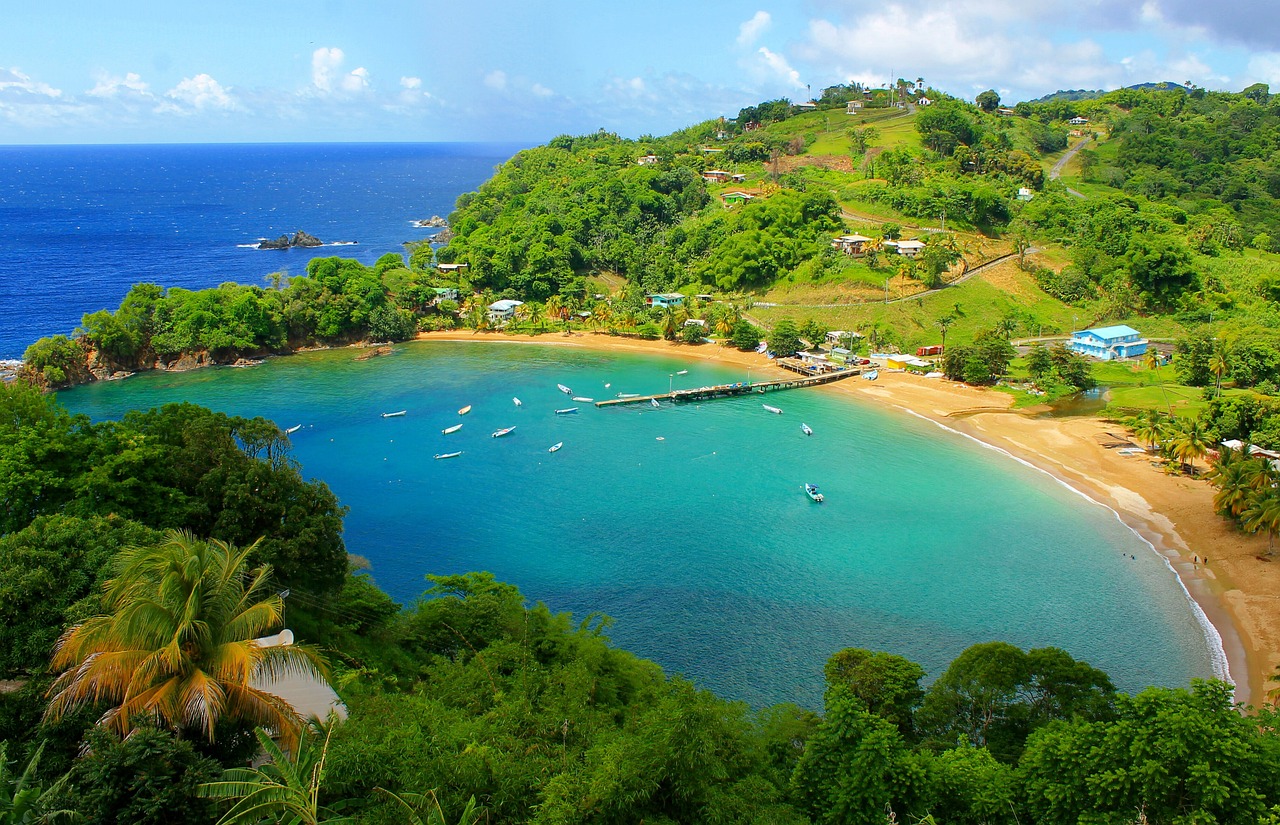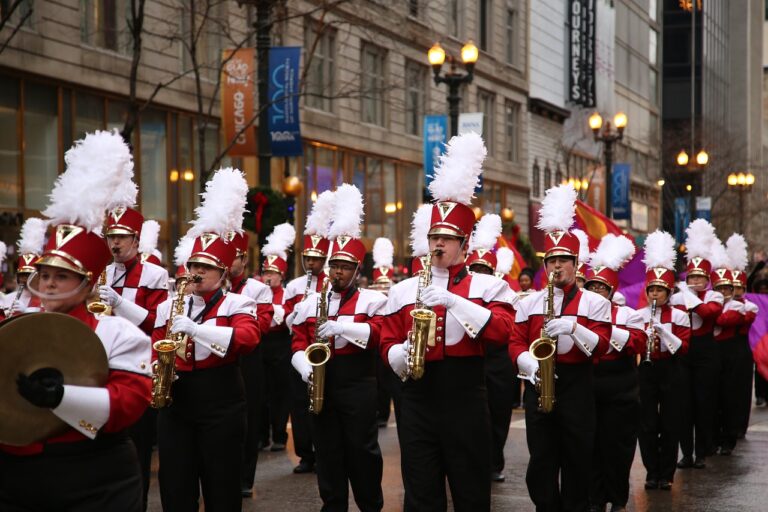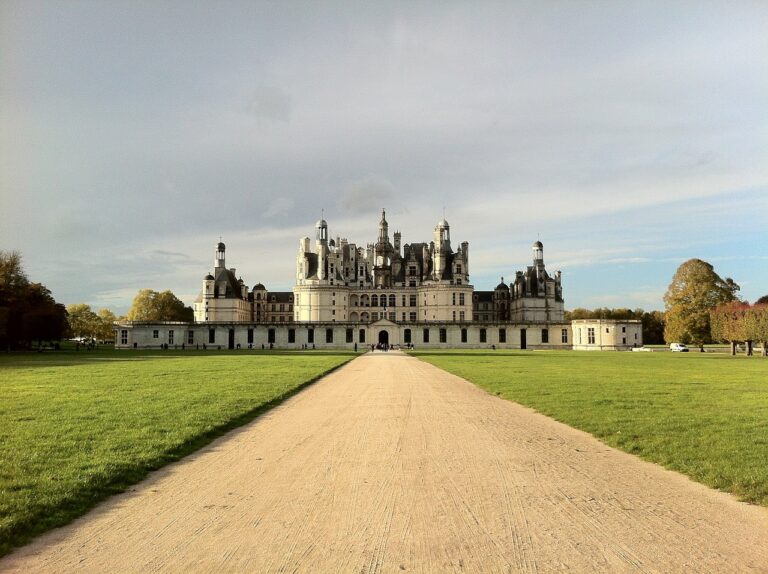33 Fun Facts About Trinidad and Tobago: Discover the Culture and History of These Caribbean Islands
Hey travel enthusiasts, in this post, I will be taking you through 33 fun facts about Trinidad and Tobago. If you are thinking of visiting this island country, this post will be of tremendous help to you.
Trinidad and Tobago is a vibrant country located in the southern Caribbean. It is known for its rich history, diverse culture, and stunning natural beauty. From the world’s hottest chili pepper to the first black winner of Miss Universe, many interesting facts about Trinidad and Tobago are worth exploring.
33 Fun Facts About Trinidad and Tobago
In this article, I will delve into 33 fun facts about Trinidad and Tobago. Together, we’ll explore its unique geography, cultural traditions, and notable achievements. Whether you are planning a trip to this beautiful country or simply want to learn more about it, these fun facts are sure to pique your interest.
So, let’s get started and discover what makes Trinidad and Tobago such a fascinating place.
Geographical Wonders
Trinidad and Tobago is a twin-island nation located in the southern Caribbean Sea. The country boasts a diverse range of geographical wonders that attract visitors from all over the world. Here are some of the most famous ones:
1. Twin Island Nation
Trinidad and Tobago are two separate islands, but they are often referred to as one nation. Trinidad is the larger of the two islands and is more developed, while Tobago is smaller and more laid-back. The islands are located just off the coast of Venezuela and are known for their beautiful beaches, lush rainforests, and vibrant culture.
2. Famous Beaches
Trinidad and Tobago are home to some of the most beautiful beaches in the Caribbean. Maracas Beach, located on the north coast of Trinidad, is famous for its golden sand and crystal-clear waters. Pigeon Point Beach, located on the southwest coast of Tobago, is another popular destination for tourists. The beach is known for its long stretch of white sand and its calm, shallow waters.
3. The Pitch Lake
The Pitch Lake is one of the most unique geological wonders in the world. Located in the southwest of Trinidad, it is the largest natural deposit of asphalt in the world. The lake covers an area of over 100 acres and is estimated to contain over 10 million tons of asphalt. The lake is also home to a variety of unique plants and animals, including the famous Pitch Lake turtle.
Trinidad and Tobago’s geographical wonders are just a small part of what makes this country so special. From its vibrant culture to its delicious cuisine, there is something for everyone to enjoy in this beautiful island nation.
Cultural Melting Pot
Trinidad and Tobago is a unique blend of cultures from all over the world, which has resulted in a vibrant and diverse society. The country’s history is deeply rooted in the African, Indian, Chinese, Middle Eastern, European, and Mediterranean cultures.
4. Ethnic Diversity
The ethnic diversity of Trinidad and Tobago is one of its most fascinating aspects. The population of nearly 1.4 million people is predominantly of African and Indian descent, but there are also significant populations of Chinese, Middle Eastern, European, and Mediterranean descent. The country’s unique mix of cultures has resulted in a rich and diverse society, which is reflected in its food, music, dance, and art.
5. Religious Celebrations
Trinidad and Tobago is home to a wide range of religions, including Christianity, Hinduism, Islam, and Rastafarianism. Each religion has its own unique traditions and celebrations, which are an important part of the country’s cultural heritage. For example, the Hindu festival of Diwali is celebrated with lights, fireworks, and traditional sweets, while the Muslim festival of Eid al-Fitr marks the end of Ramadan with feasting and prayer.
6. Carnival
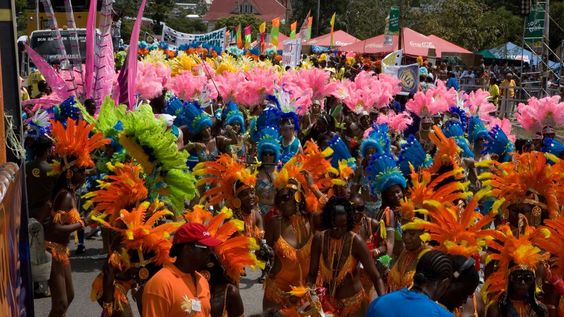
Carnival is the most famous celebration in Trinidad and Tobago and is known throughout the world for its vibrant costumes, music, and dance. The festival is held in the weeks leading up to Lent, and is a time for people to let loose and celebrate life.
The origins of Carnival can be traced back to the country’s African and European roots, and it has evolved over the years to become a unique blend of cultures. The most famous event of Carnival is the Parade of the Bands, where participants dress up in elaborate costumes and dance through the streets to the sound of soca music.
Trinidad and Tobago’s cultural melting pot is a fascinating and unique aspect of the country. Its diverse mix of cultures has resulted in a rich and vibrant society, which is reflected in its food, music, dance, and art.
Historical Landmarks
Trinidad and Tobago boasts a rich history and is home to many historical landmarks. Here are some must-see landmarks that are sure to leave visitors in awe.
7. Fort George
Fort George is a military fort located in the capital city of Port of Spain. It was built in 1804 by the British to protect the city from potential French invasion. Today, the fort is a popular tourist attraction with stunning views of the city and the Gulf of Paria. Visitors can explore the fort’s many rooms and learn about its history through informative displays and exhibits.
8. The Magnificent Seven
The Magnificent Seven is a group of seven historic mansions located in the Woodbrook neighborhood of Port of Spain. These mansions were built in the early 1900s and are known for their stunning architectural design. Each mansion has its own unique style, ranging from French Renaissance to Colonial Georgian. Today, these mansions are used for various purposes, such as government offices and cultural institutions.
9. National Museum and Art Gallery
The National Museum and Art Gallery is located in Port of Spain and is home to a vast collection of artifacts and artwork that showcase Trinidad and Tobago’s rich cultural heritage.
Visitors can explore the museum’s many galleries, which feature exhibits on everything from pre-Columbian history to contemporary art. The museum also hosts regular events and workshops, making it a great place to learn more about the country’s culture and history.
Overall, Trinidad and Tobago’s historical landmarks are a testament to the country’s rich and diverse history. Visitors to the country should not miss the opportunity to explore these fascinating sites.
Flora and Fauna
Trinidad and Tobago are home to a diverse range of flora and fauna, making it a popular destination for eco-tourism. Here are a few interesting facts about the country’s wildlife.
10. Asa Wright Nature Centre
The Asa Wright Nature Centre is a popular destination for birdwatchers. It is home to over 400 species of birds, including the Blue-crowned Motmot and the Bearded Bellbird. Visitors can take guided tours of the centre and explore the lush rainforest.
11. Caroni Swamp
The Caroni Swamp is another popular destination for eco-tourists. It is home to the national bird of Trinidad and Tobago, the Scarlet Ibis. Visitors can take a boat tour of the swamp and witness the birds’ spectacular flight back to their nesting grounds at sunset.
12. Leatherback Turtles
Trinidad and Tobago is also home to the largest nesting population of Leatherback Turtles in the world. These massive creatures can weigh up to 2,000 pounds and are known for their distinctive ridged shells. Visitors can witness the turtles nesting on the beaches of Trinidad and Tobago between March and August.
In addition to these popular destinations, Trinidad and Tobago are home to a variety of other unique species, including the Trinidad Piping Guan and the Tobago Caiman.
ALSO READ: 8 Best Caribbean Islands to Visit for Your Next Vacation
Culinary Delights
Trinidad and Tobago is a food lover’s paradise with its diverse and flavorful cuisine. From street food to fine dining, there is something for everyone. Here are some of the culinary delights that Trinidad and Tobago has to offer.
13. Street Food
Street food is an integral part of Trinidad and Tobago’s food culture. The street food scene is vibrant and diverse, reflecting the country’s multicultural heritage. Some popular street foods include:
- Doubles: A savory snack made with two pieces of fried flatbread filled with curried chickpeas, topped with chutney and hot pepper sauce.
- Bake and Shark: A sandwich made with fried shark fillet, served in a fried bread called “bake” with various toppings such as lettuce, tomatoes, and sauces.
- Corn Soup: A hearty soup made with corn, dumplings, and meat.
14. Local Cuisine
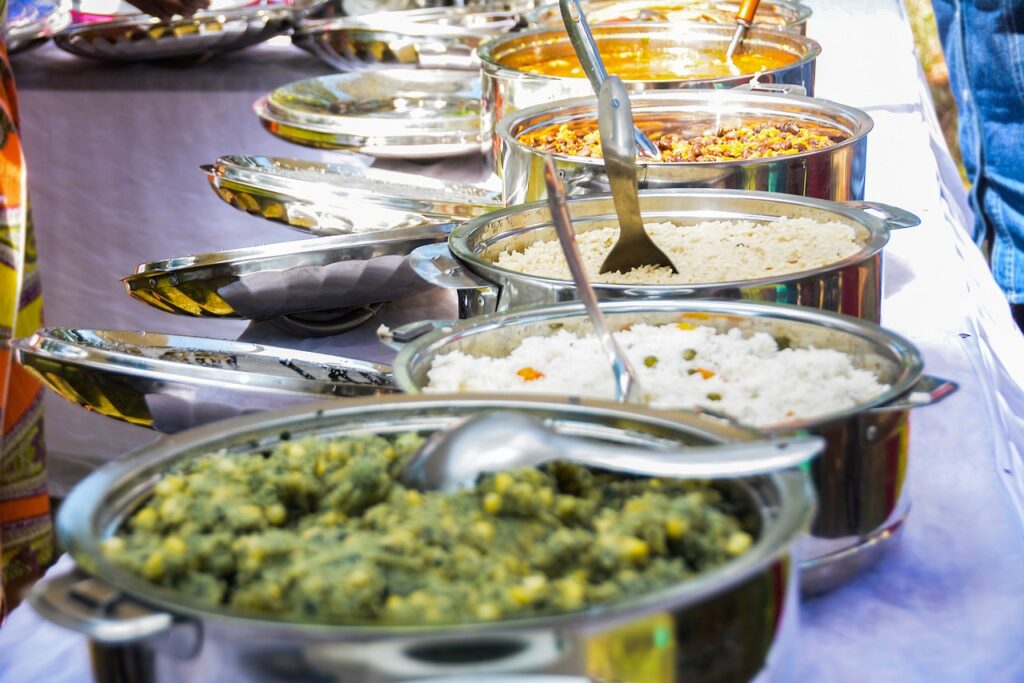
Trinidad and Tobago’s local cuisine is a fusion of African, Indian, Spanish, and Creole influences. The cuisine is known for its bold flavors, spices, and use of local ingredients. Some popular local dishes include:
- Pelau: A one-pot dish made with chicken, rice, and pigeon peas, flavored with coconut milk and herbs.
- Callaloo: A soup made with dasheen leaves, okra, and coconut milk.
- Curry Goat: A spicy curry dish made with goat meat, potatoes, and curry spices.
15. Rum Distilleries
Trinidad and Tobago is also known for its rum distilleries. The country is home to several world-renowned rum brands, such as Angostura and Caroni. Visitors can take tours of the distilleries and learn about the history and process of rum-making. Some popular rum drinks include:
- Punch de Creme: A creamy rum-based drink flavored with nutmeg and cinnamon.
- Rum and Coke: A classic cocktail made with rum and Coca-Cola.
- Mai Tai: A tropical cocktail made with rum, lime juice, and orange liqueur.
Overall, Trinidad and Tobago’s culinary scene is a reflection of its rich cultural heritage. Visitors can indulge in a wide range of flavors and experiences, from street food to fine dining, and everything in between.
Music and Arts
Trinidad and Tobago has a vibrant music and arts scene that is deeply rooted in the country’s culture and history. Here are some interesting facts about the music and arts of Trinidad and Tobago:
16. Calypso Music
Calypso music is one of the most popular music genres in Trinidad and Tobago. It originated in the mid-19th century and has since evolved into various sub-genres, including soca, rapso, and chutney. Calypso music is known for its witty and humorous lyrics that often address social and political issues. Some of the most famous calypso artists from Trinidad and Tobago include Lord Kitchener, The Mighty Sparrow, and Calypso Rose.
17. Steelpan Invention
The steelpan, also known as the steel drum, is a musical instrument that was invented in Trinidad and Tobago in the 1930s. It is made from a 55-gallon oil drum that is tuned to different pitches by hammering the metal into different shapes. The steelpan is the only musical instrument that was invented in the 20th century and is now recognized as the national instrument of Trinidad and Tobago. It is used in various music genres, including calypso, soca, and jazz.
18. Local Art Scene
Trinidad and Tobago has a thriving local art scene that includes various forms of visual arts, such as painting, sculpture, and pottery. The country is known for its vibrant and colorful artwork that reflects its Caribbean heritage.
Some of the most famous artists from Trinidad and Tobago include Leroy Clarke, Boscoe Holder, and Carlisle Chang. The country also hosts various art festivals and exhibitions throughout the year, such as the Trinidad and Tobago Film Festival and the Tobago Heritage Festival.
Overall, Trinidad and Tobago’s music and arts scene is a vital part of the country’s cultural identity and heritage. From the lively beats of calypso music to the colorful paintings of local artists, the country’s music and arts scene is a must-see for anyone visiting Trinidad and Tobago.
Sports and Recreation
Trinidad and Tobago is a sports-loving nation, with cricket, football, and water sports being some of the most popular activities.
19. Cricket Passion
Cricket is a national obsession in Trinidad and Tobago, and the country has produced some of the world’s greatest cricketers. The most famous of these is Brian Lara, who holds the record for the highest individual score in a Test match. The country has also hosted several international cricket matches, including the 2007 ICC Cricket World Cup.
20. Football
Football, or soccer as it is known in some countries, is another popular sport in Trinidad and Tobago. The country’s national team, the Soca Warriors, made history by qualifying for the 2006 FIFA World Cup, becoming the smallest nation ever to do so. The team’s success brought the country together and sparked a wave of national pride.
21. Water Sports
Trinidad and Tobago’s crystal-clear waters make it a perfect destination for water sports enthusiasts. The country offers a range of activities, including scuba diving, snorkeling, and surfing. Tobago is particularly popular for diving, with its coral reefs and shipwrecks providing a fascinating underwater world to explore. The annual Tobago International Game Fishing Tournament is also a highlight for fishing enthusiasts.
Overall, Trinidad and Tobago’s love of sports and recreation is a reflection of the country’s vibrant and energetic culture. Visitors to the country can enjoy a range of activities, from watching cricket matches to diving in the Caribbean Sea.
Economy and Industry
Trinidad and Tobago is a country with a diverse economy, driven by oil and gas, cocoa production, and tourism.
22. Oil and Gas
The abundance of oil and gas in Trinidad and Tobago has made it the largest producer of oil and gas in the Caribbean region. The energy industry is the primary driver of the country’s economy, accounting for approximately 40% of the country’s GDP. The country’s natural gas reserves are among the largest in the Western Hemisphere, making it an important player in the global energy market.
23. Cocoa Production
Trinidad and Tobago is also known for its cocoa production. The country’s cocoa is considered to be some of the finest in the world, with a rich and complex flavor. The cocoa industry is an important part of the country’s agricultural sector, providing employment and income for many farmers.
24. Tourism
Tourism is another important industry in Trinidad and Tobago. The country’s beautiful beaches, diverse culture, and rich history make it a popular destination for tourists from around the world. The tourism industry employs many people, particularly in the hospitality and service sectors.
By and large, Trinidad and Tobago’s economy is diverse, with a range of industries contributing to its growth and development. The country’s natural resources, including oil and gas and cocoa, as well as its vibrant culture and beautiful landscapes, make it a unique and dynamic place to live and visit.
Education and Innovation
25. University of the West Indies
Trinidad and Tobago is home to one of the campuses of the University of the West Indies (UWI), which is a regional university with campuses in several Caribbean countries. The St. Augustine Campus of UWI is located in Trinidad and Tobago’s capital city, Port of Spain.
The university offers a wide range of undergraduate and graduate programs in various fields, including science, engineering, humanities, and social sciences. UWI is known for its research and innovation, with several research centers and institutes, such as the Institute of International Relations and the Institute of Gender and Development Studies.
26. Innovation in ICT
Trinidad and Tobago is also making strides in the field of information and communication technology (ICT). The country has a vibrant tech industry, with several startups and tech companies emerging in recent years. Trinidad and Tobago’s government has also been investing in ICT infrastructure and initiatives to promote innovation in the sector.
For example, the Trinidad and Tobago Chamber of Industry and Commerce hosts an annual ICT conference, which brings together industry professionals, entrepreneurs, and policymakers to discuss the latest trends and innovations in the field.
Additionally, the Trinidad and Tobago Computer Society is a non-profit organization that promotes the use and development of ICT in the country.
Overall, Trinidad and Tobago is committed to developing its education and innovation sectors, with a focus on producing highly skilled graduates and fostering entrepreneurship and innovation.
Notable Personalities
Trinidad and Tobago is a country that has produced many notable personalities. From historical figures to contemporary icons, the country has made a significant impact on the world stage.
27. Historical Figures
One of the most famous historical figures from Trinidad and Tobago is Sir Arthur Lewis. He was the first black man to receive a Nobel Prize in Economics in 1979. He was born in St. Lucia, but he spent most of his life in Trinidad and Tobago, where he worked as a professor at the University of the West Indies.
Another important historical figure is Eric Williams, the first Prime Minister of Trinidad and Tobago. He played a crucial role in the country’s independence movement and is considered one of the nation’s founding fathers. Williams was also a historian and wrote several books on the Caribbean region.
28. Contemporary Icons
Nicki Minaj is one of the most famous contemporary icons from Trinidad and Tobago. She was born in Trinidad and Tobago but moved to New York City when she was five years old. She is a rapper, singer, and songwriter and has won numerous awards for her music.
Another contemporary icon is Brian Lara, who is considered one of the greatest cricketers of all time. He holds several records in the sport, including the highest individual score in a test match. Lara was born in Trinidad and Tobago and played for the West Indies cricket team for many years.
These are just a few of the many notable personalities from Trinidad and Tobago. Their contributions have made a significant impact on the world and continue to inspire generations.
Festivals and Events
Trinidad and Tobago is a multicultural country that celebrates a variety of festivals and events throughout the year. Here are a few of the most significant:
29. Diwali
Diwali is a Hindu festival that is celebrated in October or November every year. It is also known as the Festival of Lights and celebrates the victory of good over evil. During Diwali, people light up their homes with diyas (clay lamps), decorate with rangolis (colored powder designs), and exchange sweets and gifts. The festival culminates with a spectacular display of fireworks.
30. Eid-ul-Fitr
Eid-ul-Fitr is a Muslim festival that marks the end of Ramadan, the month of fasting. It is celebrated with great enthusiasm and involves prayer, feasting, and socializing with family and friends. People dress up in new clothes, visit each other’s homes, and exchange gifts. The festival is a time for forgiveness, charity, and spreading love and joy.
31. Emancipation Day
Emancipation Day is a public holiday commemorating the abolition of slavery in Trinidad and Tobago on August 1, 1834. The day is celebrated with parades, cultural events, and speeches. It is a time to reflect on the struggles and sacrifices of the ancestors who fought for freedom and equality. Emancipation Day is a reminder of the importance of human rights and social justice.
Trinidad and Tobago is a vibrant and diverse country that offers a rich cultural experience. The festivals and events are a reflection of the country’s history, traditions, and values. Visitors to Trinidad and Tobago can immerse themselves in the local culture and enjoy the festivities with the warm and welcoming locals.
Environmental Initiatives
Trinidad and Tobago is committed to preserving its natural environment and has implemented various initiatives to promote conservation and sustainable development. Here are a few notable efforts:
32. Conservation Efforts
The country’s Main Ridge Forest Reserve in Tobago is the oldest protected rainforest in the Western Hemisphere. It covers 14,000 acres and is home to diverse flora and fauna, some of which are endemic to the island.
The reserve offers numerous hiking trails and eco-adventure opportunities for visitors. In 2018, it was declared a National Heritage Site, recognizing its importance to the country’s natural heritage [1].
Trinidad and Tobago is also home to several protected areas, including the Nariva Swamp, the Caroni Swamp, and the Asa Wright Nature Centre. These areas are home to a variety of wildlife, including birds, mammals, reptiles, and amphibians. The government has implemented measures to protect these areas and their inhabitants, including enforcing hunting and fishing regulations and promoting eco-tourism [1].
33. Renewable Energy Projects
Trinidad and Tobago has been exploring ways to reduce its dependence on fossil fuels and promote renewable energy. In 2015, the government announced a goal to generate 10% of its electricity from renewable sources by 2021.
One such project is the 10 MW solar farm in Tobago, which was commissioned in 2018. The farm consists of over 35,000 solar panels and is expected to generate approximately 16,000 MWh of electricity per year, reducing the island’s reliance on fossil fuels and cutting carbon emissions .
The government has also implemented a feed-in tariff system, which allows individuals and businesses to sell excess renewable energy back to the grid, promoting the use of solar, wind, and other renewable energy sources [2].
Overall, Trinidad and Tobago’s commitment to conservation and renewable energy is a positive step towards sustainable development and a greener future for the country.
Government and Politics
Trinidad and Tobago is a parliamentary democracy with a bicameral system of government. The head of state is the President, who is elected by an electoral college consisting of members of both houses of Parliament. The President’s role is largely ceremonial, and the real power lies with the Prime Minister and the Cabinet.
The Parliament is made up of two houses: the House of Representatives and the Senate. Members of the House of Representatives are elected by popular vote, while members of the Senate are appointed by the President on the advice of the Prime Minister and the Leader of the Opposition.
The political system in Trinidad and Tobago is dominated by two major parties: the People’s National Movement (PNM) and the United National Congress (UNC). The PNM has been in power for most of the country’s history, while the UNC has been the main opposition party.
Trinidad and Tobago is also a member of the Commonwealth of Nations, the United Nations, and the Caribbean Community (CARICOM). The country has a strong tradition of democracy and political stability, and has been praised for its commitment to human rights and the rule of law.
International Relations
Trinidad and Tobago is a member of several international organizations, including the United Nations, the Commonwealth of Nations, and the Caribbean Community (CARICOM). The country is also a member of the International Monetary Fund (IMF) and the World Bank.
Trinidad and Tobago maintains diplomatic relations with many countries around the world. The country has embassies and consulates in several countries, including the United States, Canada, the United Kingdom, China, and Brazil. The country also hosts several embassies and consulates from other countries.
Trinidad and Tobago has strong ties with its Caribbean neighbors. The country is a member of CARICOM, which promotes economic cooperation and integration among its member states. The country also has close ties with Venezuela, which is located just a few miles off its coast. Venezuela is one of Trinidad and Tobago’s largest trading partners, and the two countries share cultural and historical ties.
Trinidad and Tobago has also played an active role in promoting peace and stability in the Caribbean region. The country has participated in several peacekeeping missions under the auspices of the United Nations, including in Haiti and Liberia.
Conclusion
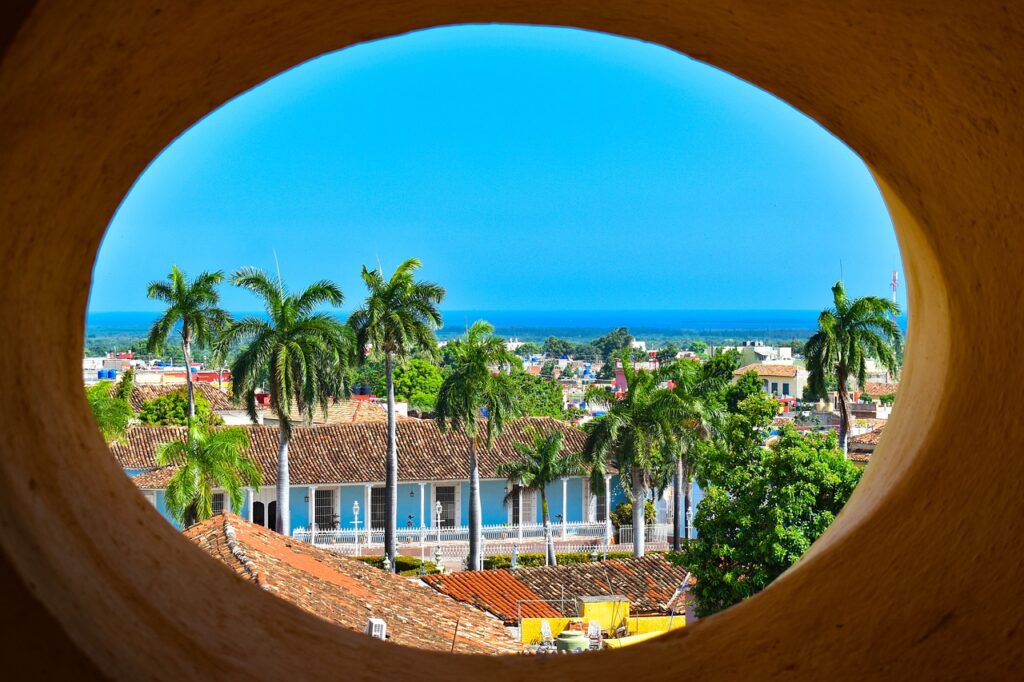
In conclusion, Trinidad and Tobago is a fascinating country with a rich history, vibrant culture, and stunning natural beauty. From its unique wildlife to its flavorful cuisine, there are plenty of interesting facts to learn about this island nation.
One of the most notable aspects of Trinidad and Tobago is its Carnival celebration, which is one of the largest and most colorful in the world. The country is also home to a diverse population that includes people of African, Indian, European, and indigenous descent, which has contributed to its rich cultural heritage.
Trinidad and Tobago is also known for its delicious cuisine, which includes dishes such as roti, doubles, and callaloo. The country’s music scene is also vibrant, with genres such as calypso and soca originating here.
Rounding up, Trinidad and Tobago is a unique and exciting destination that is well worth a visit. Whether you’re interested in history, culture, or nature, there’s something for everyone to enjoy in this beautiful country.

